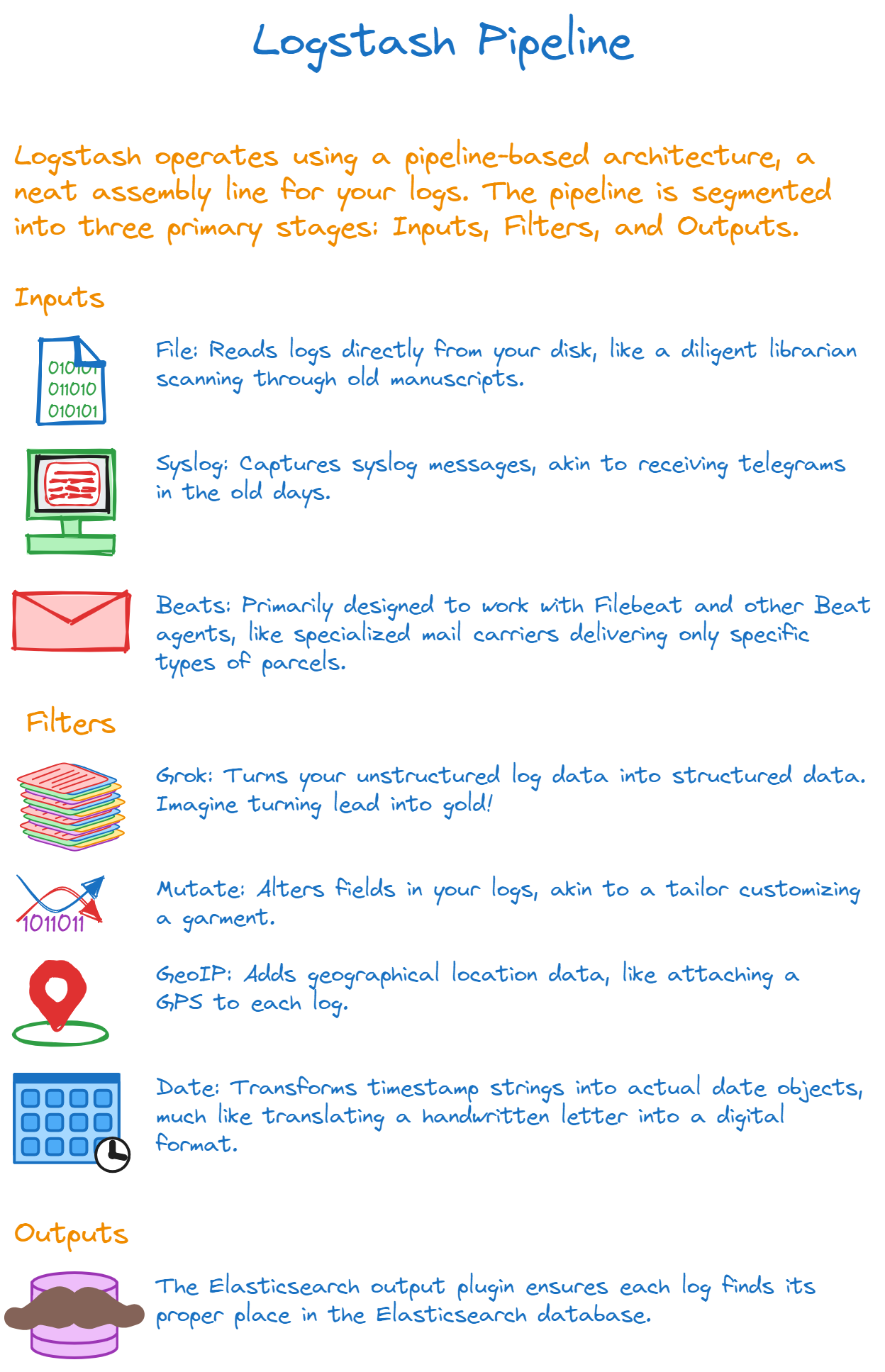Understanding the Logstash Pipeline

The Essence of Pipeline Architecture
Logstash operates using a pipeline-based architecture, a neat assembly line for your logs. Think of it like a high-tech recycling plant: raw materials (logs) enter, get processed and transformed, and then emerge as useful products (structured data). The pipeline is segmented into three primary stages:
- Inputs: The gates where raw materials come in.
- Filters: The transformation units.
- Outputs: The exit ramps leading to their final destination.
Types of Input Plugins
The Gatekeepers of Your Data
Logstash's input plugins serve as the "reception desks" where various types of data are received. Whether it's a text file or a stream of online messages, Logstash has a plugin to handle it. Here are some commonly used input plugins:
File: Reads logs directly from your disk, like a diligent librarian scanning through old manuscripts.
Syslog: Captures syslog messages, akin to receiving telegrams in the old days.
Beats: Primarily designed to work with Filebeat and other Beat agents, like specialized mail carriers delivering only specific types of parcels.
Filters: The Data Refineries
The Alchemists of Log Data
Once the data is in, it's time for some alchemy. Filters transform the raw, unstructured data into structured, enriched logs. Here are examples of some powerful filter plugins:
Grok: Turns your unstructured log data into structured data. Imagine turning lead into gold!
Mutate: Alters fields in your logs, akin to a tailor customizing a garment.
GeoIP: Adds geographical location data, like attaching a GPS to each log.
Date: Transforms timestamp strings into actual date objects, much like translating a handwritten letter into a digital format.
Output to Elasticsearch
The Final Destination
Once the logs are all dressed up, they're ready for the ball—your Elasticsearch cluster. The Elasticsearch output plugin takes care of this, ensuring each log finds its proper place in the Elasticsearch database.
Installation and Configuration
Setting Up Your Pipeline
Logstash can be set up using various methods such as repositories, binaries, or even Docker containers. The pipeline logic is defined in a configuration file, serving as the blueprint for your data processing plant.
Sample Configuration
Here's a snippet of what a Logstash configuration might look like:
1input {
2 beats {
3 port => 5044
4 }
5}
6
7filter {
8 grok {
9 # Patterns for parsing log lines
10 }
11
12 geoip {
13 # Add geoip location
14 }
15}
16
17output {
18 elasticsearch {
19 hosts => ["elasticsearch:9200"]
20 }
21}This example demonstrates a pipeline that starts with Beats input, undergoes some transformation and enrichment through filters, and then is shipped off to an Elasticsearch cluster.
The Power of Logstash
A Versatile Data Processor
Logstash is not just a log processor; it's a powerful tool that can harmonize a plethora of disparate data sources. Through its plugin ecosystem and robust processing capabilities, Logstash transmutes raw, chaotic data into structured, query-ready logs.



